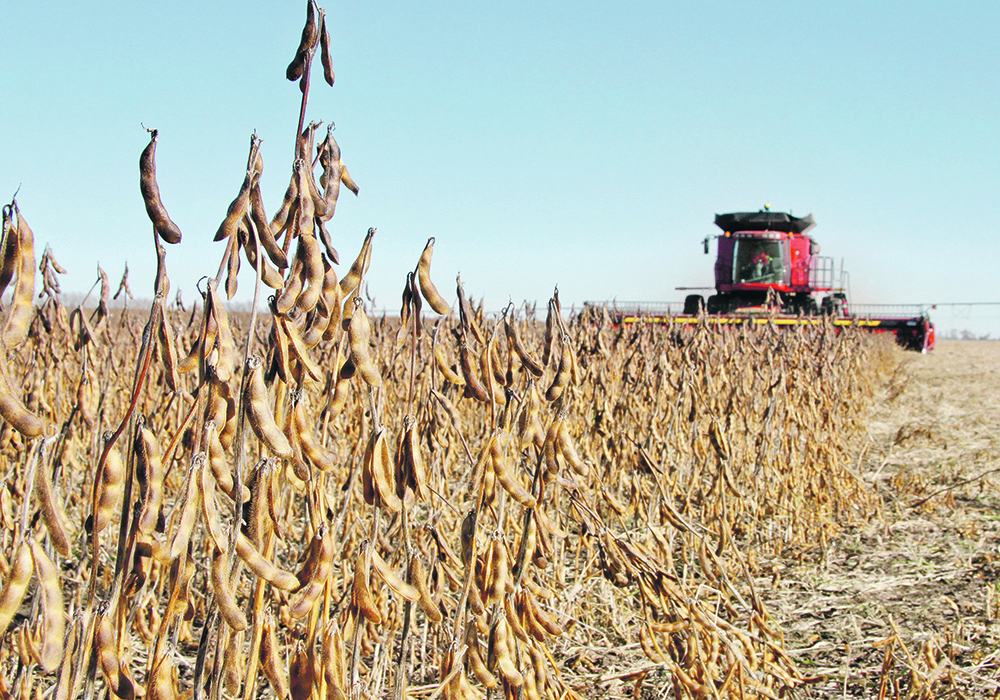Soybeans need a supply shock to break out of their range-bound trade, and it looked like the vegetable oil complex was going to be that catalyst.
A looming shortfall of the commodity appeared to be the spark that would ignite oilseed markets, but COVID-19 and a crude oil price spat has stomped out that flicker of light, said an analyst.
“It was building towards that great (supply) risk, and now, not so much,” said Emily French, managing director of ConsiliAgra.
Soy oil prices have tumbled 21 percent since the start of year, dragged down by the freefall in crude oil prices.
Read Also

Producers may see energy price relief in coming months
Energy prices for Prairie farmers should be steady to lower because the world has an adequate supply of crude oil and Western Canada has a surplus of natural gas.
“It was the price pukefest of 2020,” she said during a webinar organized by the U.S. Soybean Export Council.
However, she firmly believes it will also be the first commodity in the oilseed complex that goes on a bull run when there is a post-COVID recovery in consumer demand.
Soy oil tends to trade based on factors that will be happening three or four months down the road, said French.
Thomas Mielke, editor of Oil World, said vegetable oil fundamentals are indeed bullish due to flagging palm oil production.
“A 40-year success story is probably ending,” he said.
Palm oil producers are experiencing declining yields due to aging trees and a labour shortage that has been made worse by COVID-19 restrictions.
“The palm oil market is tightening,” he said.
Mielke said world palm oil production will likely be down two million tonnes in 2019-20. That is an astonishing development given that production has expanded by an average of six million tonnes per year the previous three years.
The lack of labour in Malaysia is a serious issue that could cause an even bigger contraction because palm fruit has to be harvested on time or it will rot in the fields.
He said the bullish impact of the reduced palm oil production hasn’t materialized due to an “overhanging demand concern.”
COVID-19 and plummeting crude oil prices have led to reduced biodiesel consumption in the European Union, South America, the United States and Asia.
Mielke expects world palm oil consumption to shrink by one million tonnes in 2019-20 after “skyrocketing” by eight million tonnes the previous year.
World production of all vegetable oils will likely fall in 2019-20 after growing at a clip of five to six million tonnes per year the past few years.
“This is very unusual,” said Mielke.
He expects global demand to grow by one million tonnes despite deep cuts in biodiesel consumption. That is going to create a shortage of vegetable oils.
Earlier this year, analysts were forecasting an eight to nine million tonne increase in South American soybean production. That is no longer the case. The increase is likely to be closer to one to two million tonnes.
Farmers in central and northern Brazil are set to harvest what looks like a record crop, but there is severe drought in Rio Grande Do Sul in the south. Yields are expected to be 28 percent below average in that important soybean-producing state.
Oil World is forecasting a Brazilian crop of 122.5 million tonnes, but it could end up close to last year’s level of 121 million tonnes.
Argentina’s crop will be smaller than last year because it was too dry in February and March.
“The bottom line is South American crops are not coming up to expectations,” said Mielke.
Soybean demand has been stronger than anticipated due to Chinese crush exceeding expectations during the first half of 2019-20.
Chinese soybean meal demand is increasing from a year ago due to the reduced availability of canola meal and the recovery of pork production in that country.
China’s soybean imports were up eight million tonnes through the first five months of 2019-20 compared to the same period a year ago. Most of the imports came from Brazil.
China’s full-year imports are expected to be 91 million tonnes, up from 82.5 million tonnes the previous year. Mielke expects imports of Brazilian beans will start declining in May-June as China becomes a more active importer of U.S. soybeans.
He expects world endings stocks of soybeans to fall 14 million tonnes to 96 million tonnes in 2019-20, but he is forecasting a record U.S. crop in 2020-21 and increased acres in Brazil, so there will be no supply concerns.
















